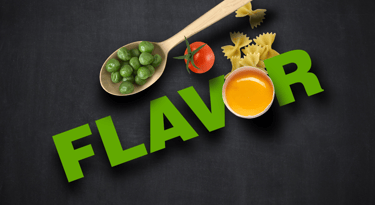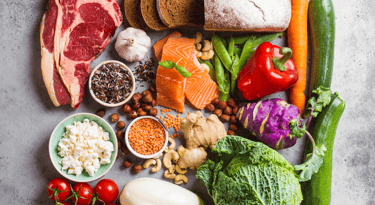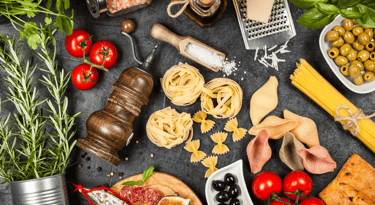
Understanding Ingredients and Flavors in Recipe Creation
Creating a recipe is both an art and a science. It requires a good understanding of how ingredients and flavors interact to produce a dish that is not only delicious but also balanced and harmonious. Here, we will explore some key concepts that can help you master the art of recipe creation.


The Basics of Flavor
Flavor is a combination of taste, aroma, and mouthfeel. There are five basic tastes that our taste buds can perceive: sweet, salty, sour, bitter, and umami. Each of these tastes can influence the overall flavor of a dish.
• Sweet: Often associated with desserts, sweetness can balance out sour or spicy flavors.
• Salty: Enhances other flavors and can help bring out the natural taste of ingredients.
• Sour: Adds brightness and freshness; commonly found in citrus fruits and vinegars.
• Bitter: Can add complexity and depth; found in ingredients like dark chocolate and coffee.
• Umami: A savory taste that adds richness; found in ingredients like mushrooms, soy sauce, and cheese.
Flavor is not just about taste; it is also heavily influenced by aroma, with our sense of smell playing a crucial role in the perception of flavor. When food is chewed, aromas are released and travel through the nasal passages, enhancing the taste experience. Additionally, texture and temperature contribute to the overall flavor profile, affecting how flavors are perceived and enjoyed. Together, these elements create the intricate and delightful world of flavors that enrich our culinary experiences.
Balancing Flavors


A successful recipe often involves balancing these tastes to achieve a harmonious dish. Here are a few tips on how to balance flavors:
Contrast and Complement: Use contrasting flavors to balance each other, such as pairing sweet with sour. Complementary flavors, like salty and umami, can enhance each other.
Layering: Build flavors gradually by adding ingredients one at a time. This allows you to adjust the seasoning as you go.
Taste and Adjust: Continuously taste your dish as you cook. This will help you identify if a particular flavor is overpowering and needs balancing.
Creating a harmonious dish is akin to orchestrating a symphony where each flavor note complements the others, resulting in a delightful culinary experience. By skillfully integrating these tastes, a cook can create a balanced and memorable meal that engages and satisfies the palate.
The Role of Ingredients


Ingredients are the building blocks of any dish. Each one contributes unique characteristics, such as texture, flavor, and aroma, which collectively define the final product. Here are some important considerations:
• Quality
High-quality ingredients often make a significant difference in the outcome of a recipe. Freshness and sourcing can elevate a dish from ordinary to extraordinary.
• Function
Understanding the function of each ingredient, such as binding, leavening, or thickening, helps in achieving the desired texture and consistency.
• Substitution
Knowledge of potential substitutes can be useful for accommodating dietary restrictions or adjusting flavors without compromising the dish.
Ingredient Interactions


Understanding how ingredients interact is crucial for successful recipe creation. Here are some common interactions to consider:
• Acid and Fat: Acidic ingredients like lemon juice can cut through rich, fatty foods, creating a balanced flavor profile. For instance, the acid in lemon juice not only adds flavor but can also tenderize meat or balance the sweetness in desserts.
• Heat and Sweetness: Spicy foods can be tempered with sweetness, such as adding honey to a spicy chili.
• Texture: Consider how different textures can enhance a dish, such as adding crunchy nuts to a creamy soup. The interaction between baking soda and an acidic ingredient like buttermilk is essential for leavening in baked goods, resulting in a light and airy texture.
Ingredients do not exist in isolation; their chemical properties and behaviors can significantly alter the final outcome of a recipe. Knowing how fats, proteins, and carbohydrates interact can help in making healthier substitutions without compromising taste or texture. Thus, a deep understanding of these interactions allows chefs and home cooks alike to innovate, adjust, and perfect their recipes, ultimately leading to more successful and enjoyable culinary experiences.
Experimentation and Creativity


Recipe creation is also about experimentation and creativity. Don’t be afraid to try new combinations of ingredients and flavors. Here are a few ways to spark your creativity:
• Fusion Cooking: Combine elements from different cuisines to create innovative dishes. For example, the sushi burrito is a delightful fusion of Japanese and Mexican cuisines. This dish takes the traditional elements of sushi—such as rice, fish, and vegetables—and wraps them in a seaweed sheet similar to a burrito wrap. It's a portable and delicious option that combines the fresh flavors of sushi with the convenience of a burrito.
• Seasonal Ingredients: Use ingredients that are in season for fresh and vibrant flavors. For the spring, asparagus (tender and slightly sweet flavor), strawberries (juicy, sweet and great red color), peas (crisp texture and sweet taste), and radishes (peppery crunch and real zest) are a few seasonal favorites.
• Culinary Techniques: Experiment with different cooking methods, such as grilling, roasting, or fermenting, to transform the flavor and texture of ingredients. As the season of renewal and freshness, spring is a great time to expand your cooking methods. Blanching involves briefly boiling vegetables and then cooling them in ice water to maintain their color and crispness, while slightly softening them. Grilling adds a smoky, charred taste that enhances the sweetness of spring produce. It's ideal for vegetables and fruits. Sous vide is a cooking method where food is vacuum-sealed and cooked in a water bath at a consistent temperature, perfect for keeping fish or chicken tender and flavorful.
Finally
Understanding how ingredients and flavors interact is key to creating a successful recipe. By mastering the basics of flavor, balancing tastes, and experimenting with new combinations, you can develop recipes/ dishes that are both delicious and innovative. Remember, the best way to improve your skills is to cook often and be open to learning from each culinary experience. So, head to the kitchen, it's your turn, you got this!


